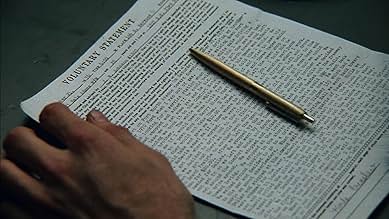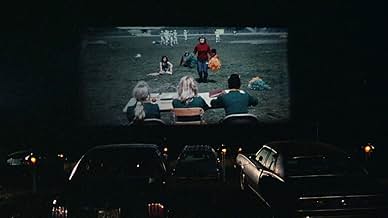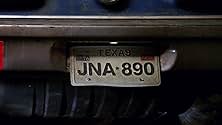IMDb RATING
7.9/10
27K
YOUR RATING
A film that successfully argued that a man was wrongly convicted for murder by a corrupt justice system in Dallas County, Texas.A film that successfully argued that a man was wrongly convicted for murder by a corrupt justice system in Dallas County, Texas.A film that successfully argued that a man was wrongly convicted for murder by a corrupt justice system in Dallas County, Texas.
- Awards
- 12 wins & 5 nominations total
- Director
- Writer
- All cast & crew
- Production, box office & more at IMDbPro
Featured reviews
A film that successfully argued that a man (Randall Dale Adams) was wrongly convicted for murder by a corrupt justice system in Dallas County, Texas.
Morris was originally going to film a documentary about prosecution psychiatrist, Dr. James Grigson, known as Doctor Death, who testified in more than 100 trials that resulted in death sentences. In almost every instance, Dr. Grigson would, after examining a defendant, testify that he had found the individual in question to be an incurable sociopath, who it was "one hundred per cent certain" would kill again.
This lead Morris to find an example, Adams, where this "incurable sociopath" status was in doubt. But we also still have that critique of Grigson -- we see what he said about Adams, a man with no history of criminal acts or violence, after only fifteen minutes with him.
This change in focus lead to a better film, most likely (though Erroll Morris has an incredible track record for good documentaries). We now get to see a wider picture of eyewitness testimony, the prejudice of the area (which includes a thriving KKK) and more.
Adams' case was reviewed and he was released from prison approximately a year after the film's release. Now that is the sign of a powerful film, and what makes documentaries so great.
Morris was originally going to film a documentary about prosecution psychiatrist, Dr. James Grigson, known as Doctor Death, who testified in more than 100 trials that resulted in death sentences. In almost every instance, Dr. Grigson would, after examining a defendant, testify that he had found the individual in question to be an incurable sociopath, who it was "one hundred per cent certain" would kill again.
This lead Morris to find an example, Adams, where this "incurable sociopath" status was in doubt. But we also still have that critique of Grigson -- we see what he said about Adams, a man with no history of criminal acts or violence, after only fifteen minutes with him.
This change in focus lead to a better film, most likely (though Erroll Morris has an incredible track record for good documentaries). We now get to see a wider picture of eyewitness testimony, the prejudice of the area (which includes a thriving KKK) and more.
Adams' case was reviewed and he was released from prison approximately a year after the film's release. Now that is the sign of a powerful film, and what makes documentaries so great.
10mprins
Along with 1996's Paradise Lost, The Thin Blue Line should be mandatory viewing for those who believe that the criminal justice system eventually convicts only the guilty. It is a stark and shocking look at one man behind bars and the truckloads of evidence that point toward his innocence. Documentarian Errol Morris indirectly argues that, at the very least, this evidence should have presented a "reasonable doubt" to the jury, and near the end of the movie, the audience has little choice but to accept his unbelievable findings. And the film ends with a single scene of just a tape recorder and voices that should be recognized as one of the most powerful endings to a movie, ever. A documentary masterpiece.
And thus, Dallas County, Texas, in 1977, successfully prosecuted Randall Dale Adams, a lowly hitchhiker, for a crime Adams did not commit.
Adams was convicted and sentenced to death for the 1976 murder of a Dallas cop. "The Thin Blue Line", by Errol Morris, is a documentary that recounts this infamous case, by way of interviews and reenactments. It's the story of a terrible injustice, one that almost cost an innocent man his life.
What is so frightening is the fervor of Dallas officials to inflict the death penalty on someone ... anyone ... They weren't about to let the cop murder go unpunished. Adams was the most convenient target. Eventually, the truth would come out. But Adams would spend twelve years in prison, some of those years on death row. After his release, Adams never received any monetary compensation, or even an apology, from the State Of Texas, for that injustice. Interestingly, more than one Dallas County official associated with the Adams case was also associated with the aftermath of the JFK assassination, thirteen years earlier.
Morris' documentary would have been easier to follow had it had subtitles, to indicate the name of the person being interviewed. Also, some of the film's material consisted of irrelevant flashback footage and repetitive reenactments. Further, the narrative presentation was at times confusing. Nevertheless, the main issue here is the powerful true-life story.
If you can get around the technical weaknesses of this film, "The Thin Blue Line" is a gripping documentary about a real life case of American injustice, in a city that is notorious for its history of botched criminal investigations.
Adams was convicted and sentenced to death for the 1976 murder of a Dallas cop. "The Thin Blue Line", by Errol Morris, is a documentary that recounts this infamous case, by way of interviews and reenactments. It's the story of a terrible injustice, one that almost cost an innocent man his life.
What is so frightening is the fervor of Dallas officials to inflict the death penalty on someone ... anyone ... They weren't about to let the cop murder go unpunished. Adams was the most convenient target. Eventually, the truth would come out. But Adams would spend twelve years in prison, some of those years on death row. After his release, Adams never received any monetary compensation, or even an apology, from the State Of Texas, for that injustice. Interestingly, more than one Dallas County official associated with the Adams case was also associated with the aftermath of the JFK assassination, thirteen years earlier.
Morris' documentary would have been easier to follow had it had subtitles, to indicate the name of the person being interviewed. Also, some of the film's material consisted of irrelevant flashback footage and repetitive reenactments. Further, the narrative presentation was at times confusing. Nevertheless, the main issue here is the powerful true-life story.
If you can get around the technical weaknesses of this film, "The Thin Blue Line" is a gripping documentary about a real life case of American injustice, in a city that is notorious for its history of botched criminal investigations.
"Thin Blue Line" is an early and extended version of "Forensic Files." The biggest difference is that "Forensic Files" focuses on the evidence used to catch a criminal whereas "Thin Blue Line" focused on evidence to exonerate a man falsely accused. Anyone not familiar with "Forensic Files," there's a narrator who recaps important points of the case along with interviews with important people to the case and some reenactment. "Thin Blue Line" had everything but the narrator.
If the justice system has fingered you as the culprit it is usually very hard to prove your innocence. Randall Adams found that out first hand. He was accused of killing a cop in Dallas in cold blood. There was very little evidence to tie him to the crime, but law enforcement saw to it that they got enough to convince a jury of his guilt.
The documentary isn't riveting by any means, and it's really a wonder why this case of who-knows-how-many was chosen for a documentary when there were probably far more egregious cases of injustice out there. Still, the documentary is good, especially for anyone concerned with the halls of justice.
If the justice system has fingered you as the culprit it is usually very hard to prove your innocence. Randall Adams found that out first hand. He was accused of killing a cop in Dallas in cold blood. There was very little evidence to tie him to the crime, but law enforcement saw to it that they got enough to convince a jury of his guilt.
The documentary isn't riveting by any means, and it's really a wonder why this case of who-knows-how-many was chosen for a documentary when there were probably far more egregious cases of injustice out there. Still, the documentary is good, especially for anyone concerned with the halls of justice.
I first saw this film not long after its initial release some 20 years ago and images and scenes from it have stayed with me ever since, so that it was with considerable anticipation that I re-watched it again recently. Down the years I can still recall Randall Adams drawling in his unforgettable voice "The kid scares me", the ever-revolving red light on the cop-car and most of all Philip Glass' wonderful, hypnotic music. The depiction of the fateful night of the cold-blooded murder of the policeman is shown from, almost literally, every possible angle, conveyed in a highly stylised way with almost every speculated remembrance of the doubtful list of every dubious (and are they ever dubious!) witness played out on the screen, the effect, in so doing, to completely explode their fantasist recollections, as was no doubt the director's aim. The reconstructions are set alongside filmed interviews of most of the main protagonists (with the main exception of the second cop in the car who witnessed the killing). As you watch these, the centrepiece clearly becomes the contrasting testimony of the almost-certain murderer David Harris with the wronged Randall Adams, the first coming across from the start as duplicitous and uncaring, the latter as bemused but reasoning. I was particularly taken with the erudition of Adams, who suppresses his inner rage with admirable restraint as he points the viewer time and again back to the evidence. As an indictment of the American criminal justice system, it hits home hard; it appears that investigation standards head for the hills especially when the law has a cop-killer to nail. Thankfully the miscarriage of justice was eventually resolved although it makes you grateful for the coincidence which led director Morris to change the subject course of his original project to instead highlight Adams' case culminating in his release soon after the film was first shown. The film however is more than a crusading documentary and there is much for students and admirers of the film-makers art to enjoy. Unforgettable, really, almost haunting, and proof if needed that truth really is stranger than fiction.
Did you know
- TriviaErrol Morris spent 2-1/2 years tracking down the various players in the Randall Adams case and convincing them to appear in the film.
- GoofsDavid Harris talks about his older brother drowning at the age of four in 1963. He says it occurred "right after President Kennedy was assassinated I believe. Sometime right after that. During the summer". However Kennedy was killed in the third week of November, well after summer.
- Quotes
Melvyn Carson Bruder: Prosecutors in Dallas have said for years - any prosecutor can convict a guilty man. It takes a great prosecutor to convict an innocent man.
- Crazy creditsDrawings from the Bender Visual Motor Gestalt Test © 1946, American Orthopsychiatric Association Inc. and Lauretta Bender, M.D.
- How long is The Thin Blue Line?Powered by Alexa
Details
- Release date
- Country of origin
- Official site
- Language
- Also known as
- The Thin Blue Line
- Filming locations
- Production companies
- See more company credits at IMDbPro
Box office
- Gross US & Canada
- $1,209,846
- Opening weekend US & Canada
- $17,814
- Aug 28, 1988
- Gross worldwide
- $1,209,846
- Runtime1 hour 41 minutes
- Color
- Sound mix
- Aspect ratio
- 1.85 : 1
Contribute to this page
Suggest an edit or add missing content





































